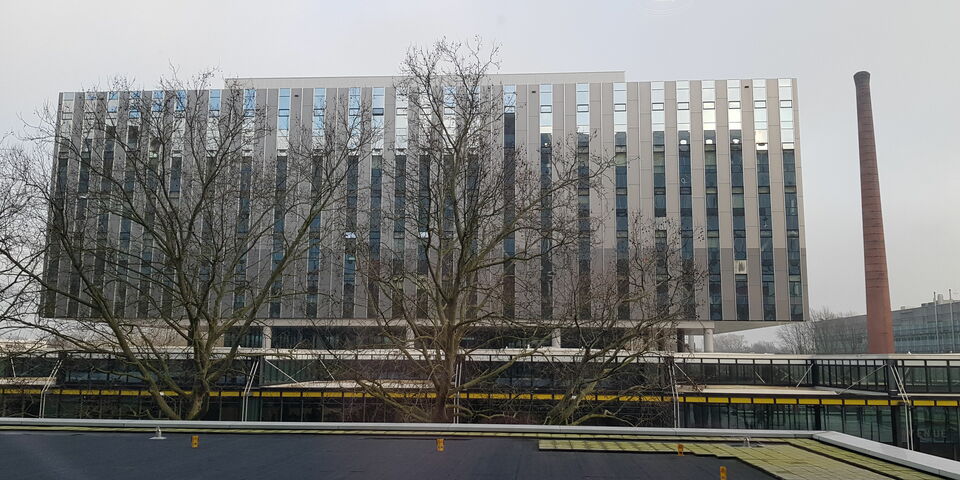Concerns about growth of Computer Science & Engineering
The decision to raise the intake limit for the Bachelor’s program Computer Science & Engineering, to which a ceiling on student intake applies, doesn’t exactly sit well with program director Erik de Vink. Prospective students had until January 15 to register for this Bachelor’s program. The limit for next academic year is set at 325 first-year students, but last week the number of advance registrations was 1,044. Based on this, De Vink expects that he will have to welcome some three hundred first-year students in September, and he fears that this will create many problems.
The number of advance registrations at Architecture, Building and Planning and Industrial Design, two of the three programs at TU/e with a ceiling on intake numbers, hardly differs from last year’s numbers. But according to the latest numbers from the Business Intelligence Cluster, the number of advance registrations at the Bachelor’s program Computer Science & Engineering increased from 801 last year to 1,044 this year. The Executive Board raised the intake limit for this program from 257 to 325 first-year students as recently as last December.
Based on this number, program director Erik de Vink, who himself was informed that the number was just over eleven hundred advance registrations, expects that approximately three hundred students will actually apply for the Bachelor’s program. “And that number will cause us problems regarding supervision and housing capacity,” De Vink says. The intake limit was set at 257 first-year students for the current academic year, which resulted in an actual number of about 260 students.
Grading pressure
As far as De Vink is concerned, there was no need to raise the intake limit. He wonders out loud how rector Frank Baaijens “exactly perceives challenge-based learning, and teacher-student ratio in particular.” According to De Vink, the additional growth in the number of first-year students will further increase the grading pressure among teachers, which is high enough already as it is. De Vink: “In part, this is because we basically still use the same approach - lecture, instruction, homework assignments - as during the time when there were fewer students. Another reason is because there simply isn’t enough time to implement improvements or educational innovations.”
The Bachelor’s program also has a group project, the so-called Software Engineering Project (SEP), De Vink says. “This is a project in which a group of about ten students needs to produce a large piece of software, including associated documentation, using a development method. It’s important that students work as a group and make progress together. For this purpose, they hold stand up-meetings each morning during which they go over and divide the tasks for the day. An important requirement is that these groups each have their own workspace, and it’s becoming increasingly difficult to find these spaces.” The activity takes place mostly during the fourth quartile, but also, albeit to a lesser extent, in the first and third quartiles, according to De Vink.
Biomedical Engineering
The ceiling on student numbers for the Bachelor’s programs Biomedical Engineering, Industrial Engineering and Management Sciences, and Mechanical Engineering was lifted for next academic year. This means that prospective students can register in advance until May 1 and that they will not need to undergo decentralized testing.
The number of advance registrations at Biomedical Engineering is currently 171 and counting. At Industrial Engineering that number is 162 and the number of registrations at Mechanical Engineering is 423. The possible growth in these numbers will be closely monitored during the next three months at the first two programs in particular. The board of Biomedical Engineering was quite shocked in September 2018, when student inflow reduced sharply. For the first time, the program had to deal with the shock effect of applying a ceiling on student intake. The intake limit was set at 225 first-year students at the time, but only 155 students actually started the Bachelor’s program that year, a significantly lower number than in previous years, when inflow numbers were at around 240 first-year students. This academic year 185 first-year students started the Bachelor’s program.
Industrial Engineering was also faced with a decline in the number of first-year students in 2018. The limit at that program was set at 250, and 166 actually started the program. The ceiling on student intake at Mechanical Engineering was abolished after a year already. It did apply for this academic year, because it was feared that the fact that the department would be running an English-taught Bachelor’s program might result in a strong inflow of international students. That has not happened. In 2018, dean Philip de Goey said that the department could accommodate a maximum number of 330 first-year students. This year, 235 first-year students started the Bachelor’s program at his department, of which 41 came from abroad.


Discussion